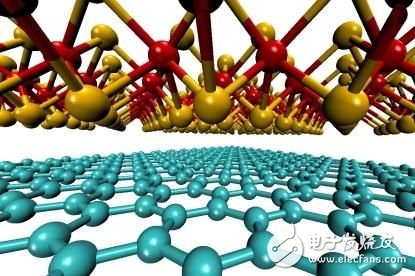MIT promotes new direction of thin and light solar cell design
Researchers at the Massachusetts Institute of Technology (MIT) are working to create the thinnest and thinnest solar cell design in the world, and hope to promote another new development direction of solar cell research.
According to the researchers, although most current solar cell designs seek to achieve high conversion efficiency at the lowest cost, they often neglect the requirements of thin and light size. However, for mobile electronic devices, light and thin have always been the main design goals, and solar cell design has always emphasized high conversion efficiency.
Today, according to MIT, the design of light and thin solar cells has become increasingly popular in remote areas where aviation, space and other applications and transportation costs are high. In the future, as materials become scarcer, the use of ultra-thin solar cells can protect natural resources and even reduce installation costs.
MIT professor Jeffrey Grossman: "As for how to become the thinnest solar cell? Our prediction is to use only two layers of material battery design." Jeffrey Grossman and postdoctoral fellow Marco Bernardi, and Rome University visiting researcher Maurizia Palummo jointly This research.
Grossman further explained, "There are indeed many applications where weight must be considered, so the thinnest active layer materials and minimal packaging are used as much as possible, resulting in thinner and more durable substrates, which will eventually change the entire installation method. In addition, this also helps to solve a core problem: how much power can we save from each atom or bond of a specific material? "

MIT researchers used computers to simulate a variety of different materials in order to find the thinnest combination of solar cells. (Source: MIT)
MIT estimates that its ultra-thin solar cell film-basically a 2D thin layer with a thickness of about 1 nanometer-is more than 1,000 times more energy-efficient than traditional solar cells. But its disadvantage is that its efficiency is low, and it needs 10 times more area than existing solar cells to produce the same amount of energy, because the efficiency of ultra-thin solar cells is about 2%, while traditional solar cells (PC) can achieve Up to 20% efficiency. However, researchers have planned to use a layered structure of stacked ultra-thin 2D solar cells to improve their efficiency.
Grossman said: "We predict that the two-layer stack may achieve 1-2% efficiency, but of course it may be stacked to more than two layers, which can improve efficiency. The efficiency of the battery made of 2D materials should also be able to achieve the current" traditional " PV is about 10-20% efficient. "
Researchers are still simulating the ultra-thin solar cell materials used in prototype design. Through a precise simulation process, atomic graphene films, molybdenum disulfide, and diselenide are used in laminated sheets of various topologies. The advantage of these designs is that they are not only lighter and thinner than traditional solar cells, but also not affected by oxidation, ultraviolet radiation, and moisture in the environment-these three are usually the killers of traditional solar cells' long-term stability. In addition, compared with traditional PV installation, because the new ultra-thin design does not require a glass cover or cooling installation, it can save more than half of the cost.
Bernardi said: "Ultra-thin solar cells are expected to reduce installation costs. At present, solar cell modules based on silicon crystals are already very heavy, and heavier with protective glass. Currently, solar arrays account for 60% of the entire installation cost, mainly It is due to weight. Therefore, in order to achieve lighter solar cells, we expect to find an ultra-thin mechanically flexible material that can be replaced with glass materials by plastic packaging in order to establish a new direction for solar cell installation. "
Compared with traditional solar cells, the material cost of ultra-thin solar cells is expected to be greatly reduced. But the researchers have not yet been able to establish this prototype in the laboratory, and therefore cannot achieve mass production of the material. Next, the researchers plan to start measuring the efficiency and long-term stability of various material formulations and stack structures in the laboratory.
Author R. Colin Johnson Compilation: Susan Hong
Table Top Gas Stove,Double Burner Gas Cooke,Mini Gas Cookers,Teflon Coated Gas Cooker
Xunda Science & Technology Group Co.ltd , https://www.xundatec.com